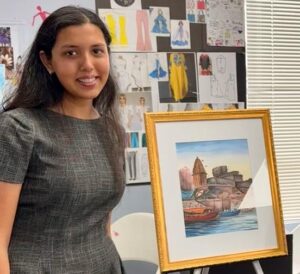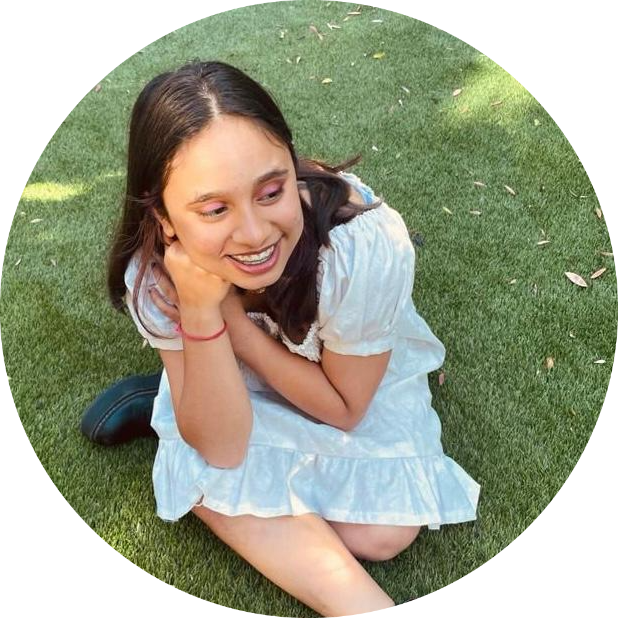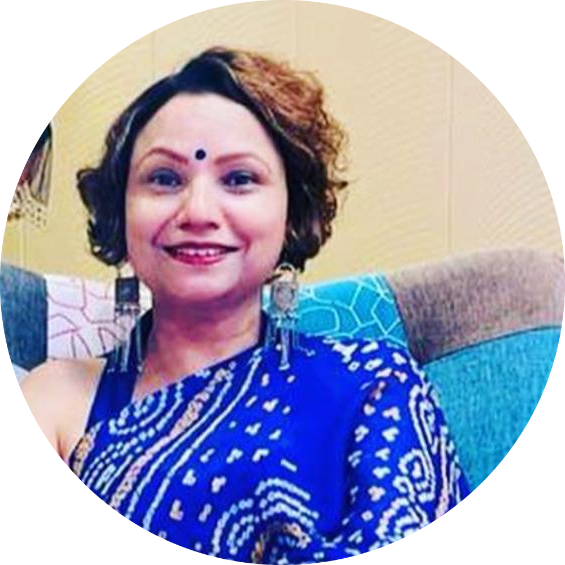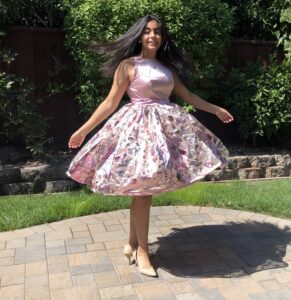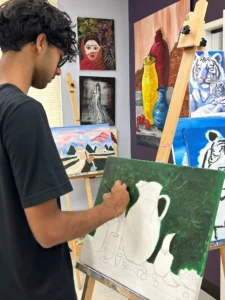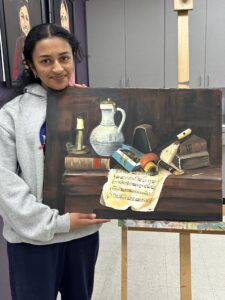
“A Lonely Storm”
By Zoya Zafer (7th) The Journey of the Graceful Rock Crab The slender crab, also called the graceful rock crab, has a few
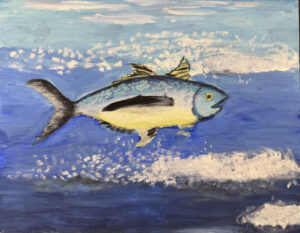
The Story of an Albacore
By- Gianna Joe Thoms Grade 2nd I made a painting of an albacore tuna swimming in my Kalaa Art & Design Studio. The
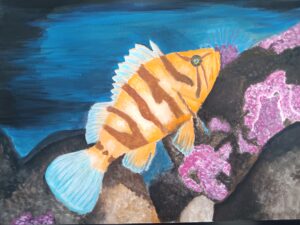
Truly magnificent; Tiger Rockfish
Rianna Shah Grade:8 The ocean is full of incredible creatures, but the tiger rockfish stands out as one of the most beautiful. The
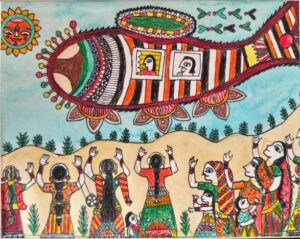
Madhubani; Tradition Takes Flight
By: Pragna Gowdra Grade 8, Kalaa Studio A Journey Through Art: The Flying Fish of Imagination Created at Kalaa Studio, this artwork feels
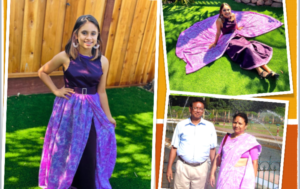
Fashion-Transcending a Fabric Between Generations
By- Saesha Sharda, Sophomore, 2021 My grandmother, Nani, had a beautiful saari: a purple one with floral patterns all over. Nani was amazing
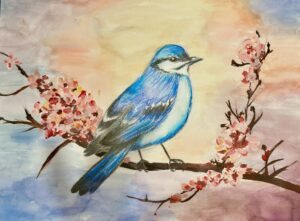
Mist of Blue
Anika Shiroor; 8th Grade, Dublin, Ca. “When as if by a call from above it is stirred, We hear the surge of its

Song of the Sky by Vihaan Shiroor
Song of the Sky-Vihaan ShiroorGrade: 4thDublin, California Cerulean Warbler is a songbird known for its blue hues and rapid, buzzy songs. It is
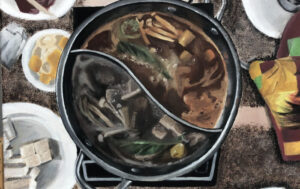
Happiness is… Having Hot Pot
By- Vivian Gao, Senior 2023 Food has always brought people together, and my family is no exception. Family meals provide an opportunity for

Radha-Krishna: The Colors of Divinity
By- Anika Shiroor, 8th Grade During this past summer holiday, our art school was deciding projects for all of us. I was given

The healing power of art
“The arts are a critical component of healthcare. Expressive art is a tool to explore, develop, and practice creativity as a means to
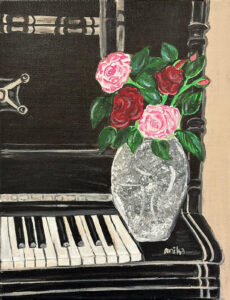
Harmonious Canvas’ Fusion of My Passions
By- Anika Shiroor, 7th grade There are two major influences in my life which started early on – art and piano. For this
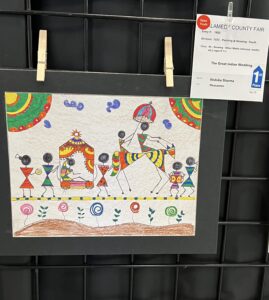
Warli Art: Indian Wedding Village Scene
By Nishika Sharma, 7th Grade PleasantonOriginating from Maharashtra, a style of tribal, or folk, art, Warli art, is believed to be one of

COVID Hang Back-2.5 years, One painting
By Aditi Manchanda- 2022 This is the story of my journey with one painting over 2 years. When I first started this piece,
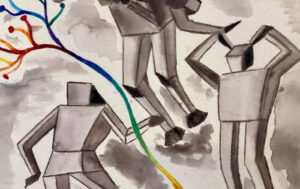
Changing Our Wiring
By Saesha Sharda, Sophomore, 27 November 2021 Humanity does not have a lack of struggles, and nowadays chaos is dissociating into different parties,
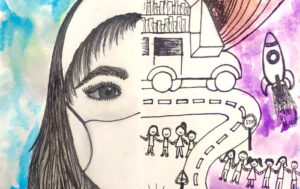
Importance of Art Education for Young Brains
By- Saanvi Sharma, 8th Grade “Creativity is contagious. Pass it on.” -Albert Einstein. One of the greatest mathematicians in history has thought of
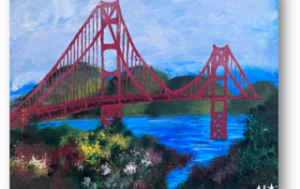
My Tween Brush Strokes-The Golden Gate Bridge
By- Aditi Manchanda, Sophomore 2022 This painting is of the Golden Gate Bridge and is one of my oldest paintings. I made it
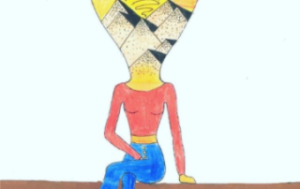
Why do I Matter, coz I believe
By- Aditi Manchanda, Grade 8 This is my artwork from the Virtual Reflections Art Competition that was held during the month of October.
Mumma Bear;Shading Techniques
By Saira Siraj, 7th Grade The first artwork (of the two that I will be talking about) that we did is a shading

Journey of my comic art
By Arjun Anand 8th grade As a kid, I liked to watch superhero movies like The Avengers and Justice League. I liked seeing
Celebrating Colors with Mother Teresa
By Arjun Anand, Grade 8th Many people have heard of Mother Teresa. She was a nun who helped “the poorest of the poor.”
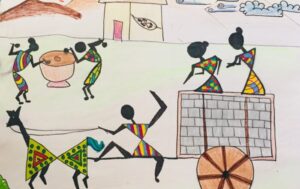
Village Scene, Warli Art
By, Minali Kancharla, Grade 7th The word Warli means a piece of land in the Varli language. Warli is a folk painting style
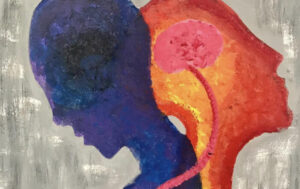
Chaos in Oneself
By- Saesha Sharda, Freshman, 2020 “Life doesn’t make any sense without interdependence. We need each other, and the sooner we learn that the
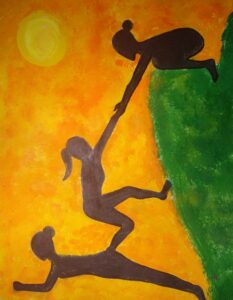
Periodt…! periods are not our weaknesses, but our strengths
By -Saesha Sharda, Grade 9th When I was a little girl, I was not really encouraged to talk about menstruation, especially in front
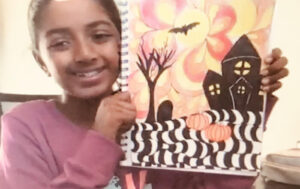
Haunted Scene – Op Art
By Saira Siraj This is a Halloween drawing which includes a headstone, haunted house, pumpkins, cemetery, bats, and a tree. On the floor
Desert Landscape Watercolor Painting
By: Apoorva Kulshreshtha For the month of September, we focused on landscape art work and watercolors. In the painting that I painted, there
My Art experience with disability
By;Aashna Singh In the month of July, my art class decided to do the art project for an international art competition as a

Aurora, Magic of Colors
By- Aarav Singh Today I am going to be talking about my artwork based on the Northern Lights, also known as an Aurora.
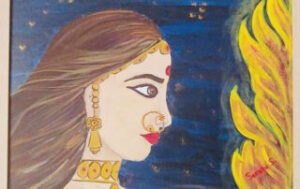
Rani Padmavati, Legend of Honor and Patriotism
By Saesha Sharda For centuries, women have been underestimated, cast down compared to men, and even ridiculed. Though some change has taken
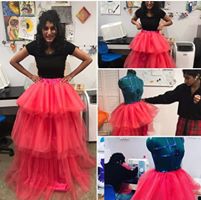
Hand Dexterity still relevant for highly specialized professions
Hand or Manual dexterity is the ability to use your hands in a skillful, coordinated way to grasp and manipulate objects and demonstrate
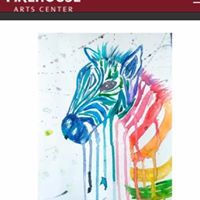
Art for improving Hand Dexterity for Children
“The hands are the instruments of man’s intelligence”, – Maria Montessori. children’s dexterity is so important in their education and for their overall
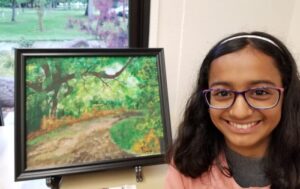
Pleasanton Landscape, My City My home
By Apoorva Kulshreshtha Pleasanton has many beauties. It has joyful downtown, the hiking trail called the Ridge, and a wonderful history. I painted
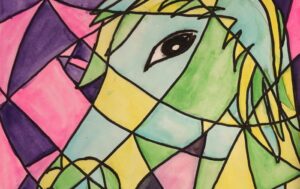
Depicting Cubism with Water Colors
Saanvi Sharma Cubism was first created by Pablo Piccaso and Georges Braque but other artists did take place in the creation of this
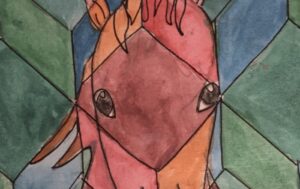
Cubist Horse
Saira Siraj 6-15-2020 Cubism is an early 20th Century Art Movement in painting. It is a style of art which is supposed to
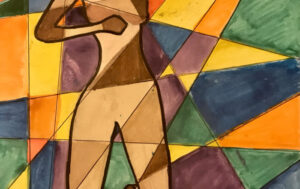
We are all the Same
Saesha Sharda June 18, 2020 The recent movement of Black Lives Matter has shed light on many prejudices and racial biases. It is
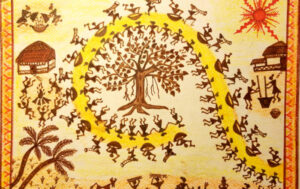
Traditional Art- Warli Painting
By Simi Tresa Originated by the Warli tribes from the Western Ghat of India, in 2500 BC, this one of the oldest art

The Three-Eyed Bridge
This is a painting of Ruby Hills. It was made by me. I painted this for my 2019 Kalaa Art and Design Exhibition.
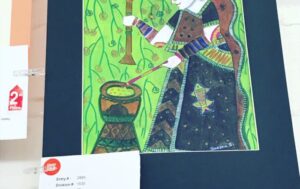
Storytelling by Art Inspired by Madhubani Folk Art of India
The beautiful thing about art is that it is universal. It has no language, no accent, and each piece of artwork tells a
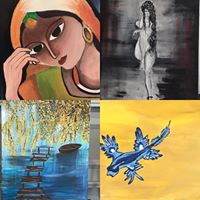
Mental & Physical Health Benefits of Being Creative
The process of creating art or design gives a feeling of self-accomplishment, a power of being able to create something, which can be
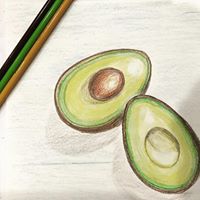
Art has the role in education of helping children become like themselves
10 of the many skills children learn from art: 1. Creativity 2.Confidence 3.Problem-solving 4.Perseverance 5. Focus 6. Non-verbal communication 7. Receiving constructive feedback
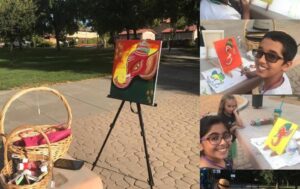
A Child’s Mind is not a Container
And just when this 10 year old said, I am not sure if I can paint!! she made her first wall painting which

